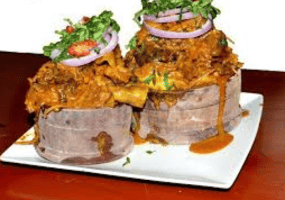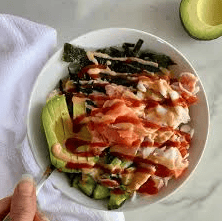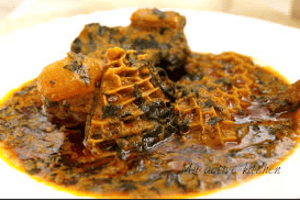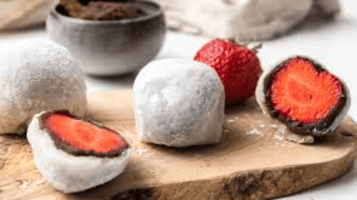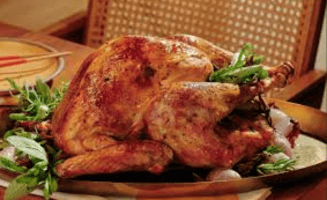Restaurant-Style Fried Rice Recipe at Home
Have you ever found yourself staring at leftover rice in your refrigerator, wondering how to transform it into something delicious? The answer is simpler than you might think: fried rice! This classic dish has won hearts across continents with its perfect balance of flavors, textures, and endless versatility.
Fried rice isn’t just a convenient way to use leftovers—it’s a celebration of humble ingredients coming together to create something extraordinary. From the aromatic base of garlic and ginger to the satisfying crunch of fresh vegetables, every element plays a crucial role in creating the perfect fried rice experience.
Once you understand the fundamental techniques, you can customize it endlessly with your favorite proteins and vegetables.

The History and Cultural Significance of Fried Rice
Fried rice originated in China during the Sui Dynasty (589–618 CE) as a practical way to repurpose leftover rice. What began as a solution to food waste evolved into a celebrated dish with countless regional variations across Asia and beyond.
In Chinese cuisine, fried rice represents the philosophy of balance—combining various ingredients for nutritional completeness while creating harmonious flavors. Different regions developed their own signature versions: Yangzhou fried rice with its generous mix of proteins, Cantonese fried rice with its delicate seasoning, or Thai pineapple fried rice with its sweet and savory contrast.
Why This Fried Rice Recipe Works
This fried rice recipe stands out from others for several key reasons:
Cold Rice Foundation: Using day-old cold rice prevents clumping and creates that perfect individual grain texture.
Balanced Flavors: The careful combination of soy sauce, sesame oil, and other seasonings creates depth without overwhelming the dish.
Proper Technique: High heat and quick cooking preserve the textural integrity of each ingredient.
Versatility: The recipe includes suggestions for variations to suit different dietary preferences and available ingredients.
Tested and Perfected: This recipe has been refined through countless preparations to ensure reliability and consistent results.
Whether you’re making fried rice for the first time or looking to perfect your technique, this recipe provides the fundamental framework for success while leaving room for personal creativity.
Equipment Needed for Perfect Fried Rice
Having the right tools makes preparing fried rice much easier:
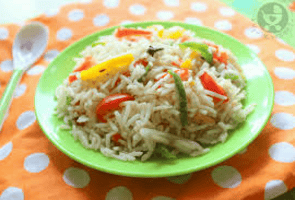
- Wok or Large Skillet
- Wooden Spatula or Wok Chuan
- Sharp Knife and Cutting Board
- Small Bowls
- Measuring Spoons
- Rice Cooker or Pot
While specialized equipment can enhance the experience, don’t let a lack of perfect tools discourage you. Many home cooks create excellent fried rice with basic kitchen equipment.
Ingredients for Classic Fried Rice
For the best fried rice recipe (serves 4):
Main Ingredients:
- 4 cups cooked long-grain rice, preferably day-old and refrigerated
- 2 tablespoons vegetable oil or peanut oil
- 2 eggs, lightly beaten
- 1 cup diced carrots
- 1 cup frozen peas, thawed
- 1 medium onion, finely diced
- 3 cloves garlic, minced
- 1 tablespoon fresh ginger, grated
- 3 green onions, thinly sliced
- 1 cup protein of choice (diced chicken, shrimp, tofu, or ham)
Seasoning:
- 3 tablespoons soy sauce
- 1 tablespoon oyster sauce
- 1 teaspoon sesame oil
- ½ teaspoon white pepper
- Salt to taste
Optional Add-ins:
- Bean sprouts
- Diced bell peppers
- Corn kernels
- Mushrooms
- Pineapple chunks
- Kimchi
- Chinese sausage (lap cheong)
The beauty of fried rice is its flexibility. Feel free to adjust the vegetables and protein based on what you have available or prefer. The proportions can be modified while maintaining the essential technique.
Preparation Before Cooking
Proper preparation is crucial for successful fried rice. The actual cooking happens quickly, so having everything ready beforehand makes the process much smoother:
Rice Preparation:
Ideally, cook your rice the day before and refrigerate it overnight. This dries out the rice, preventing clumping during frying. If you’re preparing it the same day, spread freshly cooked rice on a baking sheet and refrigerate for at least 2 hours.
Protein Preparation:
If using raw meat or seafood, marinate it briefly with a little soy sauce, cornstarch, and rice wine if available. Pre-cook it separately until just done before adding to the fried rice.
Vegetable Preparation: Cut all vegetables into similar-sized small pieces for even cooking.
Sauce Mixture: Mix sesame oil, white pepper, soy sauce, oyster sauce, in a small bowl.
Organizing: Arrange all ingredients in the order they’ll be added to the wok.
This preparation might seem detailed, but it transforms the cooking experience from chaotic to enjoyable and significantly impacts the quality of your final dish.
Step-by-Step Fried Rice Recipe Instructions
Step 1: Prepare the Rice Break up any clumps in your cold rice with your fingers, ensuring the grains are separated.
Step 2: Heat Your Wok or Skillet Place your wok over high heat until it just starts to smoke. In order to avoid sticking and achieve the desired ‘wok hei’ (breath of the wok) flavor, proper preheating is crucial.
Step 3: Prepare the eggs. Coat the heated wok by swirling in 1 tablespoon of oil. Pour in the beaten eggs and scramble quickly until just set but still moist. Remove to a plate and set aside.
Step 4: Sauté Aromatics Add remaining oil to the wok. Add onions and stir-fry for 1 minute until translucent. Stir in the ginger and garlic continuously for 30 seconds until they are fragrant but not browned.
Step 5: Cook Protein If using pre-cooked protein, add it now and stir-fry for 1-2 minutes to heat through. If you’re cooking protein from raw, this should have been done in advance.
Step 6: Add Hard Vegetables Add carrots and other harder vegetables, stir-frying for about 2 minutes until they begin to soften.
Step 7: Incorporate Rice Add the cold rice to the wok, breaking up any remaining clumps with your spatula. Spread it across the surface of the wok and let it sit for 15-30 seconds to slightly toast before stirring.
Step 8: Season the Rice Evenly cover the rice with the sauce mixture. Stir-fry continuously, using a scooping and tossing motion to ensure even distribution of the sauce.
Step 9: Add Soft Vegetables Add peas and any quick-cooking vegetables, continuing to stir-fry for another minute.
Step 10: Return the Eggs Add the scrambled eggs back to the wok, breaking them into smaller pieces as you stir-fry.
Step 11: Final Seasoning Taste and adjust seasonings if needed. Stir and mix in half of the green onions.
Step 12: Serve Transfer to a serving dish and garnish with remaining green onions. Serve immediately while hot.
The entire cooking process should take only about 10-15 minutes once all ingredients are prepared, making this fried rice recipe perfect for busy weeknights or when you need a quick meal.
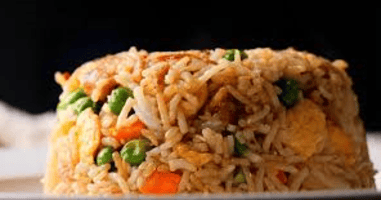
Variations on the Classic Fried Rice Recipe
The basic fried rice recipe above provides a foundation that can be customized in countless ways:
Vegetable Fried Rice: Increase the variety and quantity of vegetables. Consider adding bell peppers, mushrooms, bean sprouts, corn, and cabbage.
Chicken Fried Rice: Use 1½ cups of diced, cooked chicken as your protein. The flavor of chicken thighs is better than that of breast meat.
Shrimp Fried Rice: Use one pound of shrimp that has been peeled and deveined. They cook quickly, so add them near the end of the cooking process.
Pork Fried Rice: Use diced cooked pork or Chinese BBQ pork (char siu) for authentic flavor.
Beef Fried Rice: Thinly sliced flank steak or ribeye works well, marinated briefly before cooking.
Kimchi Fried Rice: Add ½ cup chopped kimchi and its juice for a Korean-inspired variation with a spicy kick.
Pineapple Fried Rice: Add ½ cup diced pineapple and a pinch of curry powder for a Thai-inspired version.
Brown Rice Fried Rice: Substitute brown rice for a more nutritious option. Note that brown rice has a different texture and may require slight adjustments to cooking time.
Cauliflower Fried ‘Rice’: For a low-carb option, pulse cauliflower in a food processor until it resembles rice grains, then use in place of traditional rice.
Each variation maintains the fundamental fried rice technique while offering a different flavor profile.
Important Tips for Fried Rice Success
Use Cold Rice: This cannot be emphasized enough. Freshly cooked rice contains too much moisture and will yield mushy fried rice.
High Heat is Essential: Maintain high heat throughout cooking to achieve proper texture and flavor. Your wok or pan should be hot enough that ingredients sizzle when added.
Don’t Overcrowd the Pan: If making a large batch, consider cooking in portions to maintain proper heat and prevent steaming.
Keep Moving: Continuous stirring prevents burning and ensures even cooking.
Season Thoughtfully: It’s easier to add more seasoning than to fix over-seasoned rice. Add seasoning according to taste, starting with less.
Prep Everything Before Starting: Once you begin cooking, the process moves quickly. Having all ingredients prepared and within reach makes the experience enjoyable rather than stressful.
Quality Ingredients Matter: Use fresh vegetables and good-quality soy sauce for the best results.
Embrace Improvisation: Some of the best fried rice comes from creative use of leftovers. Don’t feel constrained by traditional recipes.
Following these tips will help you achieve restaurant-quality fried rice in your home kitchen, impressing family and friends with your culinary skills.
Storage and Reheating Guidelines
Properly stored, leftover fried rice can provide convenient meals for days:
Refrigeration: Cool completely before transferring to airtight containers. Refrigerated fried rice stays good for 3-4 days.
Freezing: For longer storage, fried rice freezes surprisingly well. Simply put in air tight containers.
Reheating: Reheating fried rice in a big pot with a little oil is the best method. This restores some of the original texture. Microwave reheating works in a pinch—just add a sprinkle of water and cover to prevent drying.
Food Safety: Never leave fried rice at room temperature for more than 2 hours, as this creates conditions for bacterial growth.
Revitalizing Leftover Fried Rice: Add fresh green onions or a dash of soy sauce when reheating to refresh the flavors.
With proper storage and reheating techniques, you can enjoy your homemade fried rice for multiple meals, making it an excellent option for meal prep.
Troubleshooting Common Fried Rice Issues
Even experienced cooks occasionally encounter challenges with fried rice. Here are solutions to common problems:
Mushy Rice: This typically results from using freshly cooked rice. Solution: Use day-old rice or spread freshly cooked rice on a baking sheet and refrigerate for at least 2 hours before using.
Bland Flavor: Insufficient seasoning or not allowing ingredients to develop flavor. Solution: Toast aromatics properly and consider adding additional umami elements like oyster sauce or MSG.
Burning: Too high heat or insufficient stirring. Solution: Maintain control over your heat source and keep ingredients moving continuously.
Sticking to Pan: Pan not hot enough before adding ingredients or insufficient oil. Solution: Ensure your wok is properly preheated and use adequate oil.
Vegetables Too Crunchy: Added too late or cooked too briefly. Solution: Add harder vegetables earlier in the process or consider briefly blanching them before adding.
Uneven Sauce Distribution: Adding sauce all at once to one spot. Solution: Pour sauce over the wok’s edges and toss right away.
Egg Disappearing into Rice: Eggs overcooked or broken too finely. Solution: Cook eggs separately first, then reintroduce them later in the cooking process.
Remember that fried rice is forgiving by nature. Even if you encounter these issues, the dish will likely still be delicious, and each attempt will improve your technique.
Nutritional Benefits of Homemade Fried Rice
Carbohydrates: Rice provides energy-sustaining carbohydrates.
Protein: Eggs, meat, seafood, or tofu contribute essential protein.
Vegetables: The variety of vegetables adds vitamins, minerals, and fiber.
Portion Control: Homemade versions allow you to control portions and ingredients, making them generally healthier than restaurant versions.
Customization: You can increase nutritional value by adding more vegetables or using brown rice.
Reduced Sodium: Unlike many restaurant versions, homemade fried rice allows you to control sodium levels.
Complete Meal: With its balance of carbohydrates, proteins, and vegetables, fried rice can function as a complete one-dish meal.
By being mindful of oil quantities and incorporating plenty of vegetables, you can create a version of fried rice that satisfies both your taste buds and nutritional needs.
FAQs
How do I keep my fried rice from being too soft?
The key is using day-old cold rice that has had time to dry out in the refrigerator. The reduced moisture content helps keep grains separate during stir-frying. If you need to make fried rice with freshly cooked rice, spread it on a baking sheet and refrigerate or freeze it briefly to remove excess moisture.
Which kind of rice works best for fried rice?
Long-grain rice varieties like jasmine or basmati work best for fried rice because they cook up with distinct grains that remain separate. Medium-grain rice can also work well. Short-grain or sticky rice varieties tend to clump together, making them less ideal for traditional fried rice, though they’re used in some regional variations.
Can I make fried rice without a wok?
Absolutely! While a wok provides the ideal shape and heat distribution for fried rice, a large skillet or frying pan works perfectly well. The key is using a pan with enough surface area to allow for proper frying rather than steaming the ingredients. Cast iron skillets are particularly good alternatives to woks.
Is fried rice healthy?
Homemade fried rice can be quite healthy when prepared with a moderate amount of oil and loaded with vegetables. You can increase the nutritional value by using brown rice, adding extra vegetables, limiting sodium, and choosing lean proteins.
Control over ingredients gives homemade versions a significant health advantage over many restaurant versions.
Why does homemade fried rice taste different from that at restaurants?
Several factors contribute to the distinctive taste of restaurant fried rice:
- Commercial kitchens use extremely high heat that’s difficult to replicate at home
- Professional woks that have been seasoned over years of use impart a subtle flavor
- Restaurants often use ingredients like MSG or chicken powder for flavor enhancement
- Experienced chefs have perfected techniques through years of practice.
- You can narrow the gap by using high heat, proper techniques, and quality ingredients.
Conclusion…
Fried rice represents the beautiful intersection of practicality and culinary art. With practice, you’ll develop an intuitive sense of timing, heat management, and seasoning that transforms this simple dish into something extraordinary.
The fundamental techniques provide structure, but your choice of ingredients and seasoning makes it uniquely yours. Whether you’re creating a quick weeknight dinner or an impressive part of a multi-course meal, fried rice offers endless possibilities for culinary expression.
I hope this guide inspires you to heat up your wok or skillet and create your own perfect fried rice.


